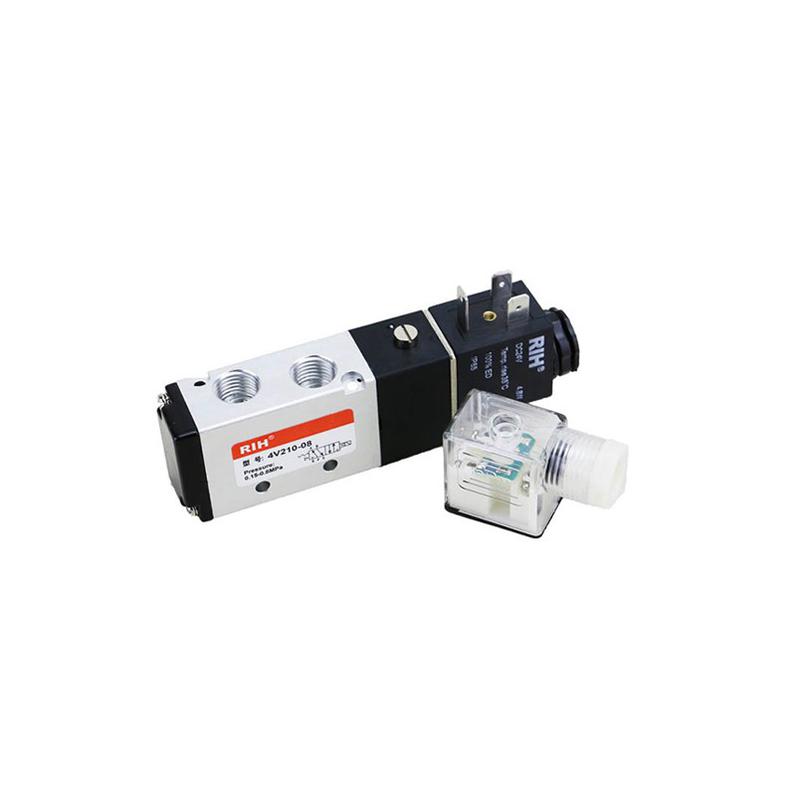Define Pneumatic System
What is a Pneumatic System?
A pneumatic system is a machine that uses compressed air to do work for automated equipment. Pneumatic systems are commonly used in industry and can be found in industrial manufacturing, construction, healthcare, and many other industries. Pneumatic systems are composed of interconnected components that work together to produce linear or rotary motion.
5 Examples of Pneumatic Systems
- Air Brakes in Vehicles: Commonly used in buses and trucks, these systems use compressed air to apply pressure to the brake pad, slowing down the vehicle.
- Pneumatic HVAC Control Systems: Utilize air pressure for regulating heating, ventilation, and air conditioning in buildings.
- Air Compressors in Power Tools: Tools like pneumatic drills and nail guns operate using compressed air for high-powered, efficient functioning.
- Packaging Machines in Industries: Automated packaging machines use pneumatic systems for various tasks like moving, sorting, and packaging products.
- Robotic Arms in Manufacturing: Pneumatic robotic arms are used for precise and repetitive tasks in manufacturing and assembly lines.
Main Function of Pneumatic System
The primary function of a pneumatic system is to convert compressed air into mechanical energy. This is achieved through the use of actuators, valves, and other components to control and transmit this energy, enabling various types of motion and force to be applied in machinery and tools.
How does pneumatic system working?
A pneumatic system works by using a constant compressed air supply provided by an air compressor. The compressed air or pressurized gas is usually filtered and dried to protect the cylinders, actuators, tools, and bladders performing the work. The compressed air is then used to produce linear or rotary motion in the form of work. The components of a pneumatic system include a compressor, receiver, valves, and actuators. The compressor takes the air from the atmosphere and compresses it to a high pressure, which is stored in the receiver. The valves are used to control the flow of compressed air to the actuators, which convert the compressed air into mechanical work. The actuators can be in the form of cylinders or mechanical devices that produce force using compressed air.
Pneumatic System Maintenance
- Regular inspection and replacement of worn-out parts.
- Ensuring proper lubrication of moving components.
- Monitoring and maintaining optimal air quality and pressure levels.
- Checking for and repairing any air leaks in the system.
Advantages of the Pneumatic System
- Safety: Reduced risk of fire and electric shock.
- Simplicity and Reliability: Fewer moving parts lead to less wear and tear.
- Cost-Effectiveness: Generally more affordable than other power systems.
- Cleanliness: Uses air, which does not contaminate the environment if leaked.
Applications of the Pneumatic System
- Industrial Automation: Used in conveyor systems, sorting machinery, and robotic arms.
- Transportation: Air brakes in large vehicles and pneumatic suspension systems.
- Construction and Manufacturing: Power tools like jackhammers, drills, and paint sprayers.
- Medical Devices: Dental tools, air pumps in hospital beds, and various surgical instruments.
What are the 7 basic components of a pneumatic system?
Compressor.
The air compressor is the primary component of a pneumatic system that generates compressed air. It compresses atmospheric air and stores it in the air tank.
Solenoid Valves.
The solenoid valve control the flow of compressed air to the cylinders. It controls the direction, speed, and force of the air cylinders.
Air Pu Hose
The compressed air pass by hose from compressor to f.r.l. , solenoid valve ,air cylinders
Air Filter
The air filter removes impurities such as dust, dirt, and oil from the compressed air. It prevents contaminants from entering the system and damaging the components.
Air Regulator
The air regulator controls the pressure of the compressed air. It maintains a constant pressure in the system and prevents damage to the components.
Lubricator
The lubricator adds oil to the compressed air to lubricate the components. It helps to reduce friction and wear on the components.
Air Cylinder
The air cylinder is the component that converts the compressed air into mechanical motion. It can be in the form of a cylinder or a mechanical device that produces force using compressed air.
Difference Between Pneumatic and Hydraulic Systems
- Operating Medium: Pneumatic systems use compressed air, while hydraulic systems use liquids (usually oil).
- Force and Speed: Hydraulic systems are capable of providing greater force due to the incompressibility of liquids, but pneumatic systems often offer higher speed.
- Safety and Cleanliness: Pneumatic systems are generally safer (no risk of fluid leaks) and cleaner than hydraulic systems.
- Cost and Maintenance: Pneumatics are usually less expensive and easier to maintain compared to hydraulics.
Which components are combined within a pneumatic flow control valve?
Valve Body: The valve body is the main housing that contains the internal components of the flow control valve.
Flow Control Mechanism: The flow control mechanism within the valve allows for the regulation of the airflow. It can be in the form of a needle valve or a similar mechanism that adjusts the size of the orifice to control the flow rate.
Bypass Check Valve: Some pneumatic flow control valves include a bypass check valve. This valve allows for rapid free flow from the output through the input port, bypassing the flow control mechanism. It enables unrestricted flow in one direction while still providing control in the desired direction.
Input Port: The input port is the entry point for the compressed air into the flow control valve. It connects to the pneumatic system or the air supply source.
Output Port: The output port is the exit point for the controlled airflow from the flow control valve. It connects to the actuator or the component that requires the regulated airflow.


